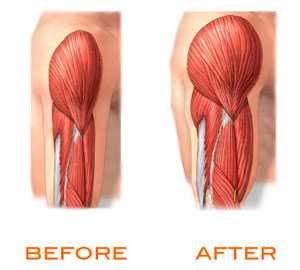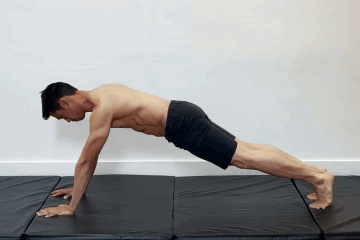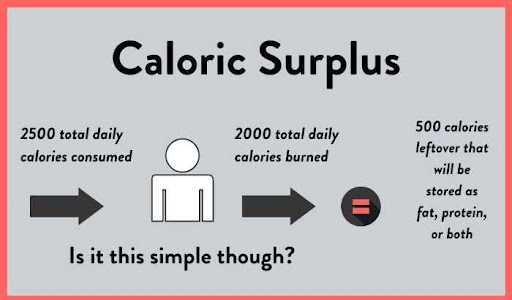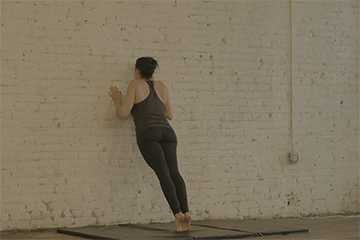
Join the tribe of Movement & Calisthenics Athlete – People just like you that are working with their own body weight to get strength, lose fat build muscle, recover from injuries and live their best lives!
Building muscle with calisthenics is a lot of fun. You have more freedom to work out how you want, and the principles are simpler than you might think.
In this article, we will discuss six principles of bodybuilding with calisthenics that will help you get started on your journey to build muscle at home.
Understanding what it takes to grow bigger muscles with calisthenics will build confidence and help you take the proper steps for your training journey.
There is a common misconception that in order to build muscle, you need weights.
This is not true!
With the right application of calisthenics techniques and bodybuilding principles, you can induce hypertrophy (muscle-building) to build an amazing, muscular, calisthenics physique.
What is calisthenics?
We cannot deny that weight training is a great way to build muscle. It’s a tried and tested fact, but it’s not the only way.
Calisthenics, like weight training, is a form of resistance training (RT). RT is a training method used to build muscle, increase strength, athletic performance, and muscular endurance. This is done by challenging your body using an external weight to create “microtears” in your muscles in which your body will repair (with proper nutrition and recovery) to make your muscles grow bigger and stronger.
Calisthenics uses your own body weight to do so instead of using an external weight with weight lifting.
How bodyweight training builds muscle
To induce hypertrophy (build muscle), three highly influencing mechanisms must be satisfied, which comprehensive research by Schoenfeld explains.
It’s worth taking note that we haven’t fully understood the full process of muscle-building, but this is our best understanding of the process.
Mechanical tension
This is the work done by your muscles. In calisthenics, you’re pushing or pulling or holding against gravity and your own bodyweight.
Using progressive methods of calisthenics help increase mechanical tension as you use more challenging exercise variations.
Metabolic stress
Metabolic stress occurs when metabolic byproducts accumulate in the muscle cells due to the anaerobic energy metabolism. It’s said that reaching the stress points triggers hypertrophy, but a 2017 study explains that metabolic stress might not directly assist in hypertrophy. Instead, it aids in muscle activation by inducing muscle fatigue.
High rep ranges are associated with metabolic stress. A study shows that muscle gains are possible when training to failure or close to it on muscle endurance rep range with exercises relatively low-loading. We can take advantage of this rep range since we’re limited with the “amount of weight” we can apply to our exercises.
It’s old news that calisthenics training is only for muscular endurance training. While calisthenics can develop strength and muscle, we can also take advantage of the muscular endurance component to build muscle mass.
Muscle damage
Photo from GymJunkies
This pertains to the muscle “microtears” we mentioned earlier. It’s proposed that after stimulating training, muscle damage occurs in the tissues. Our bodies adapt to prevent future damage by repairing and increasing the size and strength of the muscle.
However, this is still unclear if muscle damage is a mechanism for muscle growth or just a side effect from training as the factor is too difficult to isolate in research.
Muscle damage is often associated with Delayed Onset Muscle Soreness (DOMS) or the debilitating, annoying muscle soreness we experience the next day after our workout. But DOMS isn’t required to build muscle.
Utilizing the three factors
As far as we understand the hypertrophic response of our body, we can use these mechanisms to maximize muscle growth even if we’re just using body weight.
To continue muscle growth, these mechanisms can be satisfied by following a simple task of training harder each session. But to elaborate and maximize muscle development, below are the laws we need to follow to take advantage of these mechanisms.
6 Laws of calisthenics muscle building
Aim for strength
Gaining muscle through moderate-intensity to achieve 8-12 reps in 3 sets is a good guideline for developing muscles.
However, building strength with higher loads (more challenging exercise progressions) and lower rep ranges allows you to increase the intensity of your exerted effort to keep your muscles challenged.
Including regular strength-focused workouts or just strength-focused sets into your routine also stimulates muscle growth while helping in breaking plateaus and avoiding training monotony.
Implementing a mixture of recognized hypertrophy protocols with strength training protocols breaks general adaptation syndrome, which is the fast adaptation of your body to the stimulus you apply.
Strong muscles have the potential to move more load, which can overload muscles. It also increases mechanical tension; therefore muscle growth can occur.
Efficient muscle building technique requires progressive overload and the best way to induce progressive overload is to implement strength training exercises in your workout.
Whether you’re training lower body and upper body muscle groups, using the most challenging bodyweight progression to limit the rep ranges will do best as long as you exert a high effort and there’s no need to train to failure.
Advanced bodyweight movements can also be used especially strength-based skills such as planche and levers to mix up the variables.
You can also implement weighted calisthenics for advanced calisthenics athletes by simply adding free weights to your basic calisthenics movements. You can check out how to take advantage of this method in the article below:
How to use Weighted Calisthenics for Ultimate Strength Gains
Master the basics first, such as pull-ups, squats, push-ups, dips, before adding weights to your calisthenics exercise regimen.
To gain muscle, you don’t need extreme weight training nor focus on heavier weights for calisthenics movements. Building muscle through strength is possible by training near failure.
Apply the exercises appropriate strength movements for your goals. It’s best to include the heavy-load low rep sets at the beginning of the workout to implement strength training to your hypertrophic goals safely.
You also allow for shorter workouts with lower rep ranges without going to a set that lasts around 3 mins.
TAKE AWAY:
Add strength exercises in your training session as your first exercises you can stay fresh during the most calisthenics exercises of your session. 3 sets of 6 reps/10sec hold with maximal effort and 3-5 mins. rests do wonders!
Remember:
For weighted calisthenics, be sure to have mastered the movement you will perform, such as pull-ups, push-ups, squats, and dips with good form. Bodyweight exercises can add risk with weights. Master the complete range of motion then gradually add weights.
Volume through more exercises & sets
Squeeze in those reps! You might see some form breakdown, but don’t let it become too excessive.
Remember when I said training to near or failure is the key for muscle growth?
With calisthenics, there’s a certain point that progressing towards the next progression isn’t a skill you are interested in, but you just want to build muscle. Progressive overload can also be induced by adding volume to your training regimen.
Volume is simply doing more work by subjecting the muscle tissues to working longer periods and time under tension to maximize muscle growth. You can simply do this by increasing the number of reps and sets.
Leg training works well by focusing on volume, especially for the calves. Since we only use our body weight in calisthenics training and our legs are used to support our weight, adding a ton of volume can induce growth.
Train to near failure and go for many reps to maximize muscle growth. Don’t stop at 3 sets and 12 reps.
Go for 5 sets of 50 sets if needed for some exercises for muscle gain. There are some muscle groups that are difficult to grow, such as calves and leg muscles.
Training frequency also affects the week’s total working volume, so adding a split workout for 2 times per body part per week is key to maximal growth.
TAKE AWAY:
Build volume. Don’t be afraid to go past the “recommended” reps and sets for hypertrophy. Add more reps and sets if needed. It might just take a longer workout session, but it’s worth it if it means you’re getting closer to your goals. Train 2x per week per body part as well.
Remember:
Training to failure in every set is not always ideal. Leaving a few reps in the thank will produce just as much muscle growth, but sometimes, training to failure for your last set safely can help break plateaus. Implement with caution.
Focus on the fundamental movements
Push-ups can always be challenging if you adjust the progression and other variables such as tempo, reps, sets, and adding pauses. Photo from Freepik
Focus on the important movement patterns that you can use throughout your fitness journey bodyweight squats can turn into pistol squats!
The same exercise with different progression or variation hit the same muscles different muscle movements same exercise help muscles involved gain muscle.
Bodyweight exercises can keep it enjoyable and challenging with many variations.
For example, pull-ups can turn into archer pull-ups or different grips of pull-ups that alter the targeted muscles. You don’t have to stick to just one variation all the time. Master once exercise, then move to the next.
TAKE AWAY:
Stick to your basic movement patterns. It will never fail you and will open up to many more advanced movement patterns.
Remember:
Even if it’s basic, it doesn’t mean it’s easy. Follow good form and stick to a progression that challenges you safely.
Isolation exercises
Tricep push-ups are great for minimizing chest assistance in this push exercise.
Reaching muscle fatigue isn’t always an easy task with compound movements, especially with smaller muscle groups.
For example, when doing push-ups, your chest might already be tired, but your triceps needs still some pump to initiate hypertrophy. We use isolation to increase mechanical tension to targeted muscle groups further safely.
The solution is “isolation” exercises. We added some air quotes since calisthenics offer compound movements that just mimic the isolation. Calisthenics workouts must include isolation to maximize muscle-building, especially for more advanced athletes.
Here are just some exercises you can use for each major body part:
Chest – Ring flyes
Traps – Handstand shoulder shrugs
Rear Deltoids – Rear delt flyes
Rhomboids – Face pulls
Biceps – Pelican curls
Triceps – Tricep extension
Lats – Bodyweight rows
Glutes – Glute bridge
Hamstrings – Nordic curls
Quads – Quad extension
Calves – Calf raises, and squat calf raises
Lower back – Arch ups
Abs – Ab wheel
Obliques – Side planks
Use a full range of motion and good form for each exercise.
BONUS TIP: Mind-muscle activation
Basically, this means thinking of the muscle you’re activating while performing an exercise. So if you’re doing a pull-up, think of the engagement of your lats.
According to 2015 conducted by Calatayud et al, this technique is effective for specific muscle activation for a load of 60-80% of your 1 Rep MAX while not compromising the activity of other muscle groups. In addition, more muscle activation means more stimulation which is great for muscle growth.
TAKE AWAY:
Adding volume to a specific muscle group is best for superior muscle growth, ,especially with some lagging muscles.
Remember:
Only perform these exercises after your main compound movements. Isolation techniques work best for more experienced athletes.
Recovery and nutrition
The tiny muscle tears done through training can’t be repaired by your body alone. In order for the muscle fibers to grow back, proper nutrition and recovery techniques are required. Here’s a simplified version of what you need to build muscles.
Eating enough calories
Simplified diagram from Fitbod
Gaining weight requires meeting the caloric requirement plus 350 to 500 extra calories. The additional weight must come from somewhere, so eating more than your body needs to sustain its weight is required.
Keep in mind that each body has a different caloric requirement. Sometimes, even if you have the same weight, height, age, and circumstance as the other person, your body might still respond differently since we also have different metabolic rates.
Experiment with what works for you if getting a professional dietician isn’t accessible.
Getting enough macronutrients and micronutrients
Nutrients
Photo from Stephani Kay Nutrition
You might have heard that protein is needed to build muscle. That’s true, and in fact, protein is the building block of your muscles.
But other nutrients also play an essential role to help recover muscle quickly and, more than that, help support other essential body functions.
Here’s a brief for the macronutrients:
- Protein – Develop and maintain tissues, assists digestion
- Carbohydrates – Source of fuel for your body, including your muscles
- Fats – Vitamin absorption, support cell growth, protects your organs, and is also a source of energy
Vitamins and minerals help stimulate increased protein synthesis, help develop passive structures such as tendons, assist in recovery, and so much more. Overall, it keeps you healthy to make sure you’re not deficient in any vitamins and minerals.
Meeting the proper nutrition helps you lose fat, build muscle, and stay healthy at the same time.
You can improve body fat through proper nutrition alone but to build muscle; you need to partner it with good training.
High-quality sleep
Photo from Freepik
You can only build muscle when resting, not during your full-body workout. So no matter how intense and progressive your workout is, sleep is vital for recovery.
Research suggests a heavy link between sleep deprivation and slow muscle growth.
While there is no perfect number of hours of sleep, a good guideline is 8 hours of continuous, undisturbed sleep. Usually, the more demanding your everyday activities are, the more you longer sleep is needed.
Good stress management
Our lives are full of stress. There’s positive stress (like the physical stress through exercise), and negative stress (like the physiological stress brought by unexpected bills to pay). Negative stress is generally bad but not always avoidable in our lives.
Now negative stress doesn’t only distract you from your workout, it slows down your body recovery, but every person is different. Other people strive under pressure hence making more progress with it.
The best option to take would be to know how to manage your stress levels in all aspects of your life. Make adjustments on things you can control, and learn how to let go of things you cannot.
TAKE AWAY:
Sleep well. Eat well. Moderation is the key. It’s easier said than done, but it is possible if you’re dedicated enough.
Remember:
Caloric surplus doesn’t mean everything insight. Choose whole foods. Get a good night’s sleep and take it easy.
Deloads
If you’re using regular floor push-ups for your workout, you can use a wall or incline push-ups on your deload week to lessen the load or stick with pushups with half volume.
Speaking of recovery, deloading is a recovery techqniue used by advanced weight lifters to prevent overfatigue, overtraining, and promote faster muscle growth.
Going hard with your training for too long will inevitably lead to a burn out with your joints aching, muscles in pain, and little to zero motivation to train. It can also cause you to plateau with your progress.
This is when a deload is a good idea to implement.
An overview of fitness development theory in which deload is applied at the start of supercompensation. Photo from Built with Science.
In bodyweight fitness, we can also incorporate the same concept so that the entire body can initiate supercompensation or letting the body repair itself to grow stronger and bigger. Accumulated exercise stress can really be taxing and affect your recovery rate.
Here’s some protocols you can follow on how to do a deload week:
- Maintain the calisthenics exercises but with easier progression
- Use the same challenging exercises, but with half the number of sets
- 1 week of implementation after 4-6 weeks of training cycle
Let your body rest so that your muscle tissue can adapt to the rigorous training you’ve been doing
While research show that implementing a deload isn’t going to make any faster gains, you can still benefit from it to avoid overtraining in the long run.
Beginners or individuals who aren’t pushing hard in their training doesn’t necessarily need a deload week. A proper assessment of the training program and regression to easier variations could be a better solution to break plateaus.
TAKE AWAY:
Plan ahead strategic working rest week after a training cycle to avoid over-training and burning out and maintain muscle growth.
Remember:
Even if you feel like pushing hard after 4-6 weeks of training cycle, you can still take the deload and treat it as a preventive measure against burn out.
Conclusion
Building muscle mass with own body weight is possible if done correctly and the other necessary variables are also taken into consideration.
Here’s a quick rundown on the 6 principles you need to follow in order to bodybuild with calisthenics:
- Add an element of strength training
- Maintain a high workout volume
- Focus on fundamental movements
- Include some isolation exercises to supplement the fundamentals
- Practice good recovery habits and get a proper caloric surplus diet
- Consider moving rest weeks AKA Deload weeks
There are many factors affecting muscle-growth which is why a personalized and adaptive programs works best.
Personalization allows you to get enough stimulation that challenges you safely without the risk of undertraining or overtraining. Cookiecutter or one-size-fits-all workouts could put your progress at risk and hinder you from developing muscle mass.
Adaptive programs through the power of auto-regulation (Adjusting towards what you and how you feel) allows you to keep on progressing sustainably so that you don’t even need to have a deload week. It keeps training fun in the long run and your motivation high.
If you’re interested building muscle with calisthenics, take the adaptive and personalized route for maximum progress.Start your journey by knowing what your body’s capable of.
TAKE THE ASSESSMENT NOW!
















